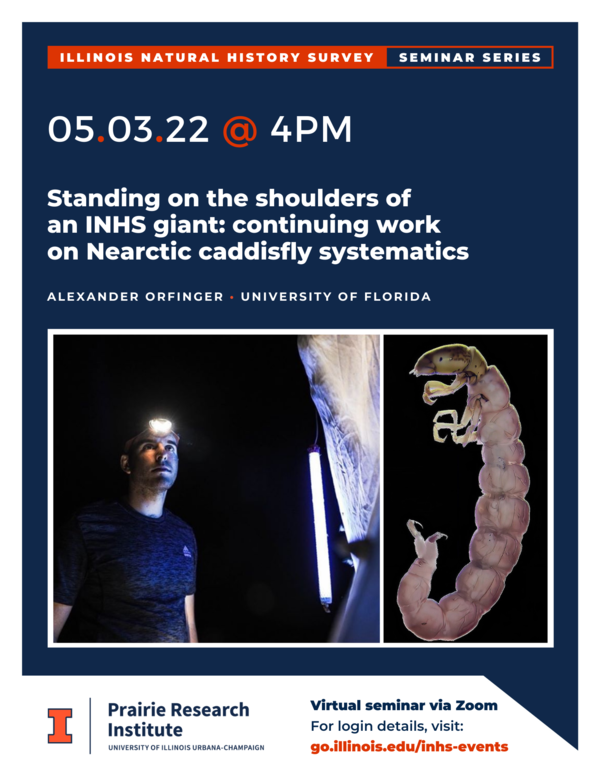
INHS Seminar - Standing on the shoulders of an INHS giant: continuing work on Nearctic caddisfly systematics
- Event Type
- Seminar/Symposium
- Sponsor
- Illinois Natural History Survey Seminar Committee
- Virtual
- Join online
- Date
- May 3, 2022 4:00 pm
- Speaker
- Alexander (Alex) B. Orfinger, Dept. of Entomology and Nematology, University of Florida/Center for Water Resources, Florida A&M University
- Contact
- Jason Robinson
- jrob@illinois.edu
- Views
- 126
- Originating Calendar
- INHS Events
This seminar will be held in person in room 1005 Forbes Natural History building, 1816 S Oak, Champaign or you may join Zoom: here | Meeting ID: 891 9819 3727 | Password: 017056
Abstract: Trichoptera (caddisflies) are a diverse and ecologically important order of insects comprising over 16,250 nominal species worldwide. These holometabolous insects exhibit aquatic immature life stages that are important components of food webs and aquatic-terrestrial nutrient cycling. The larvae are of particular interest given their reputation as “underwater architects” and their use as sentinels in water quality monitoring programs. Despite the prominence of the larval life stage, alpha taxonomy of the order relies primarily on male genitalic characters, leaving larval taxonomy lagging far behind. The Nearctic members of the genus Polycentropus Curtis, 1835 (Polycentropodidae) are a prime example, with 29 of 30 larvae (97%) and 12 of 30 females (40%) undescribed. To help remedy this taxonomic impediment, we use an integrative approach combining mtDNA and morphology to associate, describe, and diagnose larvae of Nearctic Polycentropus. Using >400 barcoding fragments of cytochrome oxidase I (COI) from males of known identities and unknown larvae, I have now associated larvae of 15 Nearctic Polycentropus species, or 50% of the known fauna. Diagnostically informative characters have been identified, including muscle scar patterning, head color and pigment banding, and anal claw curvature for larvae, and various aspects of the genitalia for females. Ongoing efforts include generating identification tools such as discriminatory matrices for use by taxonomists, ecologists, and workers in water quality biomonitoring. Finally, current issues with the identification of Nearctic larval Polycentropodidae